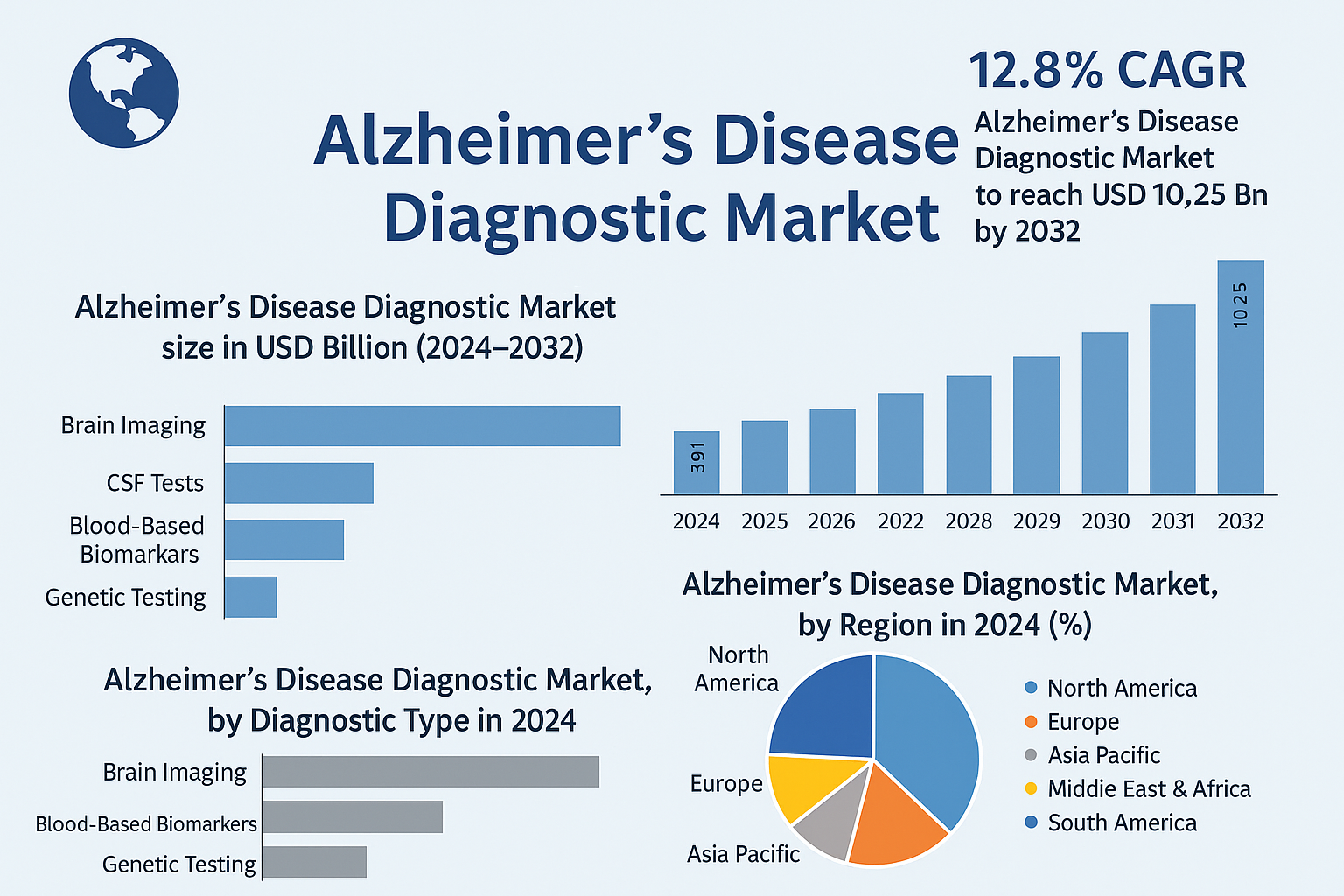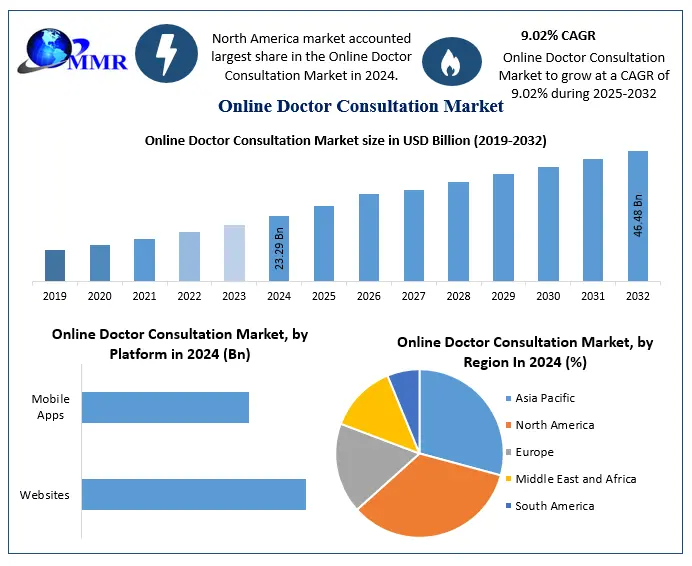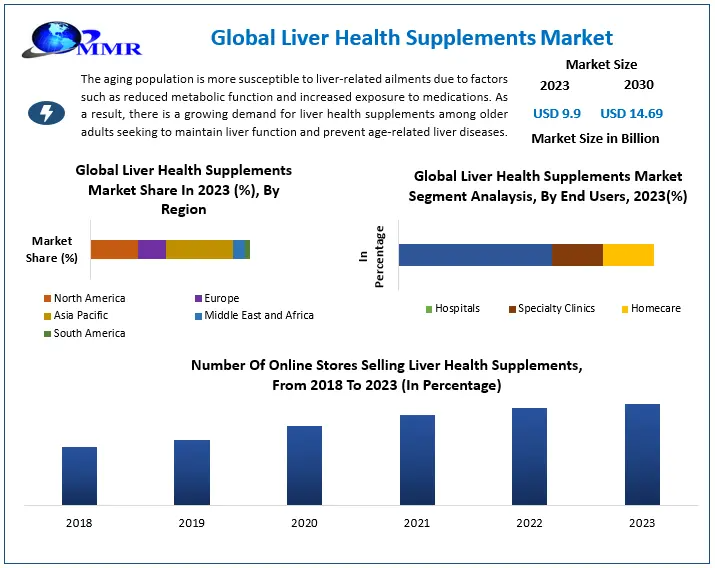Alzheimer’s Disease Diagnostic Market Overview:
Alzheimer’s Disease Diagnostic Market size is projected to grow significantly, increasing from USD 3.91 billion in 2024 to USD 10.25 billion by 2032. This growth, at a CAGR of 12.8% from 2025 to 2032, reflects the increasing focus on early diagnosis, innovation in detection technologies, and the urgent need to address the rising prevalence of Alzheimer’s disease.
Global Alzheimer’s Disease Diagnostic Market :Estimation & Definition:
Alzheimer’s disease is a progressive neurological condition marked by memory loss, disorientation, and cognitive impairment. The diagnostic segment includes various tools such as brain imaging (MRI, PET), cerebrospinal fluid (CSF) analysis, blood-based biomarker tests, and genetic screenings. These diagnostics support early intervention strategies, improve treatment outcomes, and help in disease monitoring, especially as no permanent cure exists.
Alzheimer’s Disease Diagnostic Market Growth Drivers & Opportunities
Escalating Disease Prevalence
Alzheimer’s disease is affecting millions globally and is increasingly being diagnosed in aging populations. The consistent rise in cases has led to a critical demand for accurate, cost-effective, and scalable diagnostic solutions.
Advancements in Non-Invasive Diagnostics
Technological breakthroughs have enabled the development of minimally invasive blood-based biomarkers and imaging technologies. These tools provide clinicians with earlier, more precise information, improving the window for therapeutic interventions.
Increased Public and Private Funding
Investments by healthcare institutions, governments, and private players in neurology research and diagnostic infrastructure are rapidly increasing. These efforts are directed toward improving early detection rates and expanding access to advanced testing.
Aging Global Population
As life expectancy rises globally, the elderly population segment is growing, particularly in developed and emerging economies. This demographic shift is contributing to the increasing incidence of Alzheimer’s and related dementias, thus expanding the need for diagnostic services.
Growing Awareness and Screening Programs
Public health campaigns are promoting early screening and diagnosis. This shift in mindset is encouraging patients and caregivers to seek early assessments, thereby driving market growth.
Alzheimer’s Disease Diagnostic Market Segmentation Analysis
By Diagnostic Type:
-
Brain Imaging: MRI and PET scans are the gold standard for detecting amyloid plaques and structural changes in the brain, essential for definitive Alzheimer’s diagnosis.
-
CSF Tests: Analyzing spinal fluid for biomarkers such as beta-amyloid and tau proteins helps identify disease presence even before symptoms arise.
-
Blood-Based Biomarkers: Emerging technologies enable detection of disease markers in blood samples, promising widespread and accessible testing.
-
Genetic Testing: Screening for APOE and other gene variants can help determine susceptibility, especially in high-risk individuals and families.
By Therapeutic Type:
-
Cholinesterase Inhibitors: Medications such as Donepezil and Rivastigmine that support neurotransmitter levels, helping manage mild to moderate Alzheimer’s symptoms.
-
NMDA Receptor Antagonists: Memantine is widely used in moderate to severe cases to regulate glutamate activity and support cognitive function.
-
Other Therapies: Experimental treatments targeting tau tangles and beta-amyloid build-up offer potential for disease-modifying effects.
By Region:
-
North America: Market leadership supported by cutting-edge research, robust healthcare infrastructure, and a growing elderly population.
-
Europe: Significant market share, driven by proactive government health policies and growing focus on dementia care.
-
Asia Pacific: Rapidly expanding due to healthcare modernization, increased life expectancy, and improving diagnostic capacity.
-
Middle East & Africa: Emerging market status with growing awareness and investments in healthcare access and infrastructure.
-
South America: Steady growth fueled by initiatives to improve neurological care and expand diagnostic availability.
Alzheimer’s Disease Diagnostic Market Country-Level Analysis
United States
A leading player in the Alzheimer’s Disease Diagnostic Market, the U.S. benefits from high healthcare spending, research innovation, and strong collaboration between biotech firms and academic institutions. The country also has a high rate of clinical trial activity and a large aging population.
Germany
Germany serves as a key contributor to the European Alzheimer’s diagnostic market. The country’s aging population, advanced medical system, and emphasis on early-stage diagnosis and care integration support market expansion. Its role in EU-wide Alzheimer’s research initiatives strengthens its market position.
Alzheimer’s Disease Diagnostic Market Competitive Landscape (Commutator Analysis)
The competitive landscape is defined by innovation, partnerships, and the integration of diagnostic platforms with therapeutic strategies. Key players are focusing on technology-driven diagnostic advancements to differentiate their offerings.
-
Eli Lilly and Company: Pioneering efforts in Alzheimer’s research and diagnostics, including novel biomarker development and integrated care solutions.
-
Hoffmann-La Roche: Strong portfolio of neurodegenerative diagnostic tools with active involvement in collaborative Alzheimer’s research.
-
Biogen Inc.: Known for introducing new treatment pathways, the company is aligning diagnostics with therapeutic innovations for early-stage detection.
-
C2N Diagnostics: Offers cutting-edge blood-based biomarker tests that are gaining global traction for their ease of use and reliability.
-
Quanterix Corporation: Uses ultra-sensitive digital biomarker detection technology, enabling early diagnosis and patient monitoring across clinical settings.
The competitive focus is now on streamlining diagnostic timelines, enhancing sensitivity and specificity of tests, and integrating artificial intelligence for faster, more accurate disease prediction
To view full Report:
The Alzheimer’s Disease Diagnostic Market is experiencing a critical evolution. Increasing prevalence, rising healthcare investment, and advancements in testing methods are propelling the market into a new era of growth. The emergence of non-invasive diagnostic techniques and personalized medicine solutions are making early detection more feasible and impactful.



